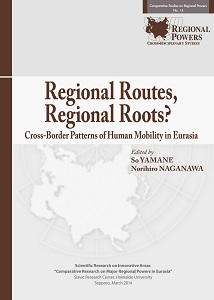Red Souvenirs. Commodification of Chinese Propaganda Art
Red Souvenirs. Commodification of Chinese Propaganda Art
Author(s): Yoko Takayama
Subject(s): Sociology, Sociology of the arts, business, education, Tourism
Published by: Hokkaido Slavic-Eurasian Reserarch Center
Summary/Abstract: “Red souvenirs,” including key rings, cell phone straps, and postcards, are the most recognized of all contemporary Chinese souvenirs with their vibrant images of communist leaders and martyrs. In China, the color red is a symbol of socialism and traditionally an auspicious color. The motif of Red souvenirs is mainly based on the “Red spirit,” that is, the collective memory of revolutionary history, which is particularly embodied in Propaganda art and martyr memorials embellishing public squares. During 1942 and 1976, “Red” memorials were built all over the country in an official art style called the “Mao style.” After the end of the Cultural Revolution, the Mao style faded with enormous hatred directed toward this turbulent movement. However since 1978, this hostility has gradually receded with the implementation of reform and the adaption of a more open policy, and the Mao style increasingly began to decorate souvenirs.
What accounts for this successful reevaluation of the Chinese propaganda posters? How did they change their functions from means of propaganda to souvenirs? Focusing on “Red series” playing cards, this paper demonstrates the commodification process of the Chinese propaganda art accompanied by the revival of the Mao Cult and the increasing popularity of “Red tourism.”
Book: Regional Routes, Regional Roots? Cross-Border. Patterns of Human Mobility in Eurasia
- Page Range: 85-98
- Page Count: 14
- Publication Year: 2017
- Language: English
- Content File-PDF

